

 |
Search the Site with

|
 |  | 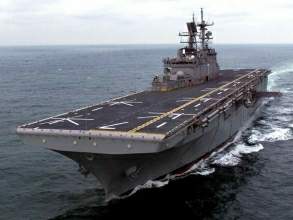 |
USS Iwo Jima is the seventh WASP-class Amphibious Assault Ship and the second ship in the Navy to bear the name. The IWO JIMA is also the Navy's third Amphibious Assault Ship designed and built from the keel up with accommodations for female sailors.
| General Characteristics: | Awarded: December 28, 1995 |
| Keel laid: December 12, 1997 | |
| Launched: February 5, 2000 | |
| Commissioned: June 30, 2001 | |
| Builder: Ingalls Shipbuilding, West Bank, Pascagoula, Miss. | |
| Propulsion system: two boilers, two geared turbines | |
| Propellers: two | |
| Aircraft elevators: two | |
| Length: 840 feet (256 meters) | |
| Flight Deck Width: 140 feet (42.6 meters) | |
| Beam: 106 feet (32,.3 meters) | |
| Draft: 26,5 feet (8.1 meters) | |
| Displacement: approx. 40,500 tons full load | |
| Speed: 23 knots | |
| Aircraft: 30+ (including V-22 Osprey, AH-1Z Viper and AH-1W Super Cobra, F-35B, CH-53K Sea Stallion, MH-60S Naval Hawk) | |
| Well deck capacity: three LCAC or two LCU or six LCM-8 or 40 Amphibious Assault Vessels (AAV) (normal) or 61 AAVs (stowed) | |
| Crew: Ship: 73 officers, 1,009 enlisted Marine Detachment: 1,894 | |
| Armament: two Mk-29 NATO | |
| Cost: approx. $761 million | |
| Homeport: Norfolk, Va. |
Crew List:
This section contains the names of sailors who served aboard USS IWO JIMA. It is no official listing but contains the names of sailors who submitted their information.
USS IWO JIMA Cruise Books:

About the Ship's Coat of Arms:
 The Shield:
The Shield:
Iwo Jima was the site of one of the most important and bitterly fought amphibious operations of World War II. The United States Marine Corps War Memorial is based on the immortal photograph of the flag raising on Mount Suribachi on February 23, 1945 and has become a symbol of strength, courage and valor. The three spearheads represent the amphibious triad: The Landing Craft Air Cushion (LCAC), The Amphibious Assault Vehicle (AAV), and the V-22 Osprey Tilt Rotor Aircraft. The light blue reflects the seas of the world. The USS IWO JIMA (LHD 7), one of the last ships propelled by steam boilers, is reflected by the white disc with the Hero's boiler.
The Crest:
The USS IWO JIMA (LHD 7) is configured to deploy with the V-22 Osprey Tilt Rotor Aircraft. This is symbolized by the attacking Osprey. The previous USS IWO JIMA (LPH 2) was a helo-carrier during the Vietnam Era. The palm fronds commemorate the previous ship and its service in Vietnam.
The Motto:
The motto is based on Fleet Admiral Chester W. Nimitz's words when he spoke of the Sailors and Marines who fought at the battle of Iwo Jima: "Among the Americans who fought at Iwo Jima, uncommon valor was a common virtue." The red is emblematic of valor and sacrifice.
USS IWO JIMA History:
Fabrication work for USS IWO JIMA began at the Ingalls Shipyard, Pascagoula, Miss., on September 3, 1996, and the ship’s keel was laid on December 12, 1997. The ship was launched on February 4, 2000, and was christened by her sponsor, Mrs. Zandra Krulak, wife of Commandant of the Marine Corps Gen. Krulak, in Pascagoula, Mississippi on March 25, 2000.
The commissioning crew moved aboard in April 2001 and made the ship’s maiden voyage (accompanied by more than 2,000 World War II veterans - many of them survivors of the Battle of Iwo Jima) on June 23, 2001. She was commissioned a week later in Pensacola, Florida, on June 30, 2001. Shortly thereafter, the ship and crew began an accelerated Inter-Deployment Training Cycle.
Together with the 26th Marine Expeditionary Unit (Special Operations Capable), IWO JIMA conducted her maiden, eight-month deployment, returning to Norfolk in October 2003.
Completing essentially four deployments in one, IWO JIMA’s operational capabilities were put to the test as the ship inserted marines from the 26 MEU (SOC) into Northern Iraq during Operation Iraqi Freedom, patrolled the Persian Gulf, conducted operations in and around Djibouti as part of Operation Enduring Freedom, and executed a peacekeeping mission off the coast of war-torn Liberia, transiting more than 45,000 nautical miles.
After a post deployment maintenance period, IWO JIMA became the Flag ship for Commander, Second Fleet in October 2004. For over a year, IWO JIMA participated in many high visibility exercises, experiments, and operations with US and allied naval forces.
On August 31, 2005, IWO JIMA was sortied to the Gulf of Mexico to provide disaster relief and to conduct support operations in the wake of Hurricane Katrina. IWO JIMA sailed up the Mississippi River to the city of New Orleans to directly support relief operations and act as the central command center for all federal, state, and local disaster recovery operations.
During this critical period, IWO JIMA also served as the region’s only fully functional air field for helicopter operations, conducting over one thousand flight deck operations; provided hot meals, showers, drinking water, and berthing to thousands of National Guardsmen and relief workers; provided medical services, including first aid and surgical services, for disaster victims; and conducted clean-up operations in the city and suburbs of New Orleans.
After completing her Expeditionary Strike Group (ESG) Integrated Training exercises in February 2006, the IWO JIMA stood out on her second six-month deployment in support of the War on Terrorism in June. In July, she relieved the USS PELELIU (LHA 5) ESG in the Middle East. Shortly afterwards, IWO JIMA and the 24th MEU assisted in the departure of American citizens from Lebanon after the US Embassy in Lebanon had requested assistance in the evacuation in mid-July. Later in the cruise, AV-8B Harrier aircraft embarked aboard IWO JIMA flew combat missions against Taliban strongholds in Afghanistan. The IWO JIMA ESG returned home to Norfolk on December 6, 2006.
The ship next entered the BAE Systems Norfolk Ship Repair Facility in Norfolk for a four-month maintenance period. Following sea trials in June 2007, the amphibious assault ship joined the Fleet Week celebrations in Port Everglades, Fla., in April 2008.
From July 8-18, 2008, the IWO JIMA ESG joined a Composite Unit Training Exercise (COMPTUEX) off the US East Coast. Assigned to the ESG was also the BNS Greenhalgh (F 46), marking the first time a Brazilian Navy surface unit was fully integrated into a US Strike Group. The IWO JIMA Team subsequently participated in USS THEODORE ROOSEVELT's (CVN 71) Joint Task Force Exercise (JTFEX) conducted July 21-31.
On August 26, 2008, the amphibious assault ship departed Norfolk on its third scheduled deployment to the US Central Command, returning to Norfolk on March 27, 2009, after the seven-month underway period. IWO JIMA arrived in New York City two month later to participate in this city's Fleet Week. After the Fleet Week, the ship crossed the Atlantic arriving in the Gulf of Guinea on July 9, 2009, to support US President Obama's visit to Ghana July 10-11.
From October to December, IWO JIMA went through a successful CNO Availability at BAE SYstems Shipyard. During that time, the ship scored high marks during the Light Off and Assessment November 23-25. For the remained of 2009, IWO JIMA remained in port at Naval Station Norfolk.
2010 started with preparations for Inspection and Survey (INSURV) that took place in April, followed by the participation in the Fleet Week at Port Everglades, Fla.
Accidents aboard USS IWO JIMA:
| Date | Where | Events |
|---|---|---|
| November 14, 2019 | Naval Station Mayport, Fla. | A fire breaks out in a cargo hold just before midnight aboard the IWO JIMA while she is undergoing a Phased Maintenance Availability (PMA) at her homeport. Crewmembers, assisted by the Jacksonville Fire and Rescue Department and sailors from USS THE SULLIVANS (DDG 68) take almost five hours to extinguish the fire. Eleven sailors suffer minor injuries. |
About the Ship's Name:
USS IWO JIMA is named for the epic battle of February 1945, in which three divisions of the United States Marine Corps took control of the tiny island of Iwo Jima from 22,000 determined Japanese defenders.
The United States had recovered from the disastrous attack on Pearl Harbor, to the point where routine air attacks on Japanese cities could be made by heavy bombers launched from the Marianas. The successful outcome of the war seemed inevitable, but victory over the Japanese would come only at a high price. The Japanese considered Iwo Jima a part of mainland Japan, and an invader had not set foot on Japanese soil for 4,000 years.
Iwo Jima was a thorn in the side of the US heavy bomber crews. Air attacks on the Marianas bomber bases, and bombers enroute to and from Japan, were launched from Iwo Jima. An assault on the island was necessary to eliminate these air attacks and to provide a haven for damaged American aircraft returning from Japan.
Amphibious forces of the US Pacific Fleet attacked the fortress of Iwo Jima on February 19, 1945, with a formidable force, totaling 495 ships, including 17 aircraft carriers, 1170 planes, and 110,308 troops. Before the amphibious assault, elements of the Air Force and Army Air Corps pounded the island in the longest sustained aerial offensive of the war. Incredibly, this ferocious bombardment had little effect. Hardly any of the Japanese underground fortresses were touched.
The Japanese defenders devised a unique and deadly strategy to defend Iwo Jima from an American assault. Instead of building a barrier to stop the Americans at the beach, they fortified the interior of the island, creating a defense that could not be breached in a day.
On February 19, 1945, the first wave of Marines were launched after an hour-long bombardment by the Navy’s “big guns". The Americans planned to capture, isolate and fortify Mt. Suribachi. The success of the entire assault depended upon the early capture of the mountain.
After an hour of calm, the Japanese defenders, hiding in their network of caves and underground bunkers, unleashed a hail of gunfire. Mortars, machine guns and heavy artillery rained down from scores of machine gun nests atop Suribachi. After the first day of fighting, 566 American men were killed and 1,755 more were wounded. For the next several days, some of the bloodiest battles of the Pacific were fought on the isle of Iwo Jima.
It was a battle of attrition on terrain that had no front lines; where the attackers were exposed and the defenders fortified.
The battle for Iwo Jima was fought desperately until March 26, when the island was finally secured by US forces. In the struggle, nearly 7,000 Americans and more than 20,000 Japanese were killed. It was one of the most savage and costly battles in the history of the Marine Corps. As Fleet Admiral Chester W. Nimitz observed, “Among the Americans who served on Iwo Jima, uncommon valor was a common virtue.”
USS IWO JIMA Image Gallery:
 |  |  |  | |
 |  | 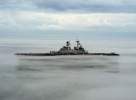 |  | |
The photo below was taken by Karl-Heinz Ahles and shows IWO JIMA under construction at Ingalls Shipbuilding on May 17, 1999.
 |
The photo below was taken by Brian Barton when IWO JIMA was at Naval Base Norfolk on July 23, 2002.
 |
The photos below were taken by Alexei Saveliev and show the USS IWO JIMA at Limassol, Cyprus, in August 2006.
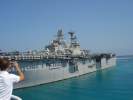 |  |  | 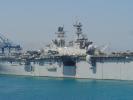 |  |
 |  | 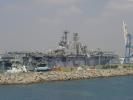 |
The photos below were taken by Michael Jenning and show the USS IWO JIMA at Naval Base Norfolk, Va., on May 8, 2014.
 | 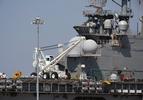 |  | 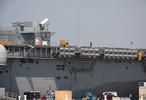 |  |
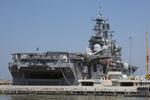 | 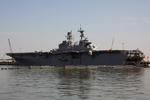 |  |
The photos below were taken by Michael Jenning and show the USS IWO JIMA at Naval Base Norfolk, Va., on December 26, 2021.
 |  | 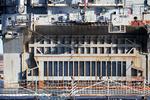 | 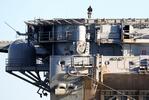 | 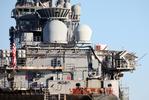 |
 |  |  |
The photos below were taken by Michael Jenning and show the USS IWO JIMA undergoing a Drydocking Selected Restricted Availability (DSRA) at General Dynamics NASSCO in Norfolk, Va., on September 6, 2022.
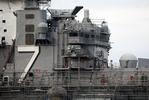 |  |  |  |  |
 |  |  |  | 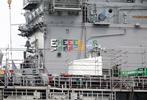 |
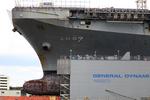 |  | 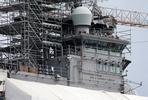 | 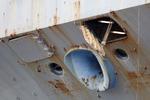 |  |
 | 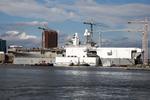 |
The photos below were taken by Michael Jenning and show USS IWO JIMA at Naval Base Norfolk, Va., on October 9, 2023.
 | 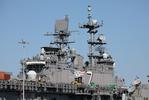 |  |  |  |
 |  |
 Back to Amphibious Assault Ships site.
Back to Amphibious Assault Ships site.  Back to ships list.
Back to ships list.  Back to selection page.
Back to selection page.  Back to 1st page.
Back to 1st page.